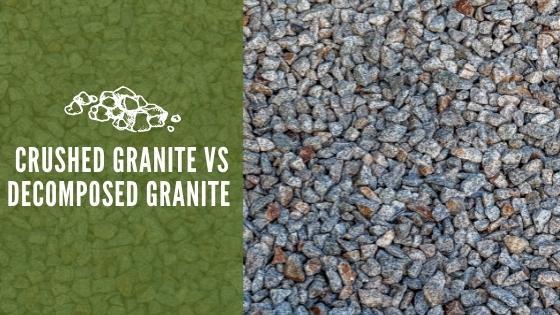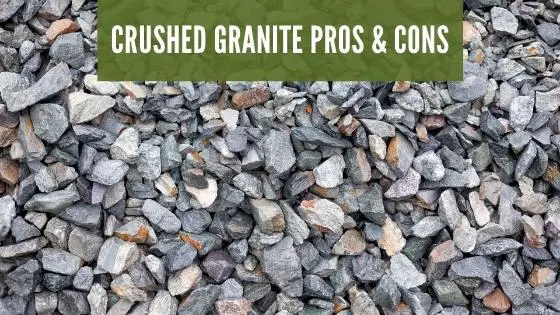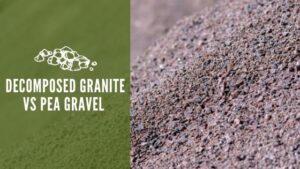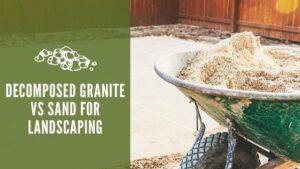Crushed Granite vs Decomposed Granite

Crushed granite, decomposed granite (DG), and crushed stone are three terms that you will often hear interchangeably when discussing landscape material. Although they are similar, there are significant differences between these three materials.
This article will focus on the differences between crushed granite and decomposed granite, but you also need to understand how crushed stone fits into the picture, too. Let’s explore these materials to see which one might be right for your landscape project.
Is Crushed Granite the Same As Decomposed Granite?
First off, let’s explore the differences between crushed granite and decomposed granite. From a technical standpoint, decomposed granite is granite that natural processes have weathered to become a mixture of sand and small granite pebbles.
Crushed granite is made by taking larger pieces of granite and mechanically crushing them into smaller pieces. Typically, when you crush a larger stone of any kind, it breaks down into chips and pieces with jagged edges.
When discussing crushed stone products, the only difference between crushed stone and crushed granite is that crushed stone can contain other rocks and is typically made of limestone. Crushed granite contains mostly granite. Decomposed granite is often referred to as “fines” because it contains a high percentage of fine sand.
When it comes to creating a walkway or constructing a hardscape patio area, fines have a softer texture underfoot. They have a texture that is more like walking on a beach than a rocky pathway. When the feel of the material underfoot is an important consideration, decomposed granite is a better choice than crushed granite.
Decomposed Granite Pros and Cons
Now, you understand the difference between decomposed granite and crushed granite. Let’s explore some advantages and disadvantages of decomposed granite. One difference is that decomposed granite is available in a range of colors.
You can find it in brown, black, gold, rose, and white. DG provides excellent drainage and can be used around plants. It softens transition areas and creates a more delicate appearance.
DG is easy to install, but it does not necessarily have the best weed prevention qualities. Many people choose to install a weed barrier before putting decomposed granite in their beds. Also, decomposed granite made for pathways may have a stabilizer that can harm plants.
Decomposed granite with stabilizers is the best choice for pathways, or you can put a base layer of stone underneath to make the path long-lasting.
Crushed Granite Pros and Cons
Crushed granite has a rougher texture than DG. Crushed granite is typically limited to grays from light gray to black. It is more limited in colors than decomposed granite. When creating a stable path, crushed granite will compact and make a harder, more stable surface. Compared to decomposed granite and materials, like pea gravel, crushed granite can be harder on the feet due to its rough edges.

One consideration with crushed stone and decomposed granite is that different materials have various amounts of sand than small stones. The exact composition differs among various sources and manufacturers. To be considered “fines,” it must be about 80 to 85% sand or dirt. To be considered decomposed granite, it must have sizes of quartz that are about 3/8-inch or less.
When choosing your material, one thing to consider is to determine whether you want fines, crushed granite, or decomposed granite. Mixtures that contain more sand or dirt will tend to stick to the feet and be tracked indoors. Those that have a higher percentage of larger pieces of stone will be less likely to track in the dirt but will have a rougher surface.
As you can see, there are many considerations concerning whether DG or crushed granite Is best for your landscape project. When it comes to the price per cubic foot, both of them are relatively equal. However, it may take more cubic feet to fill an area when using finer material. Which one you pick depends on the texture you want to achieve, whether the color is important, and how much traffic the area will have. The most important thing is to carefully consider your choice and take time planning before you begin your project.


